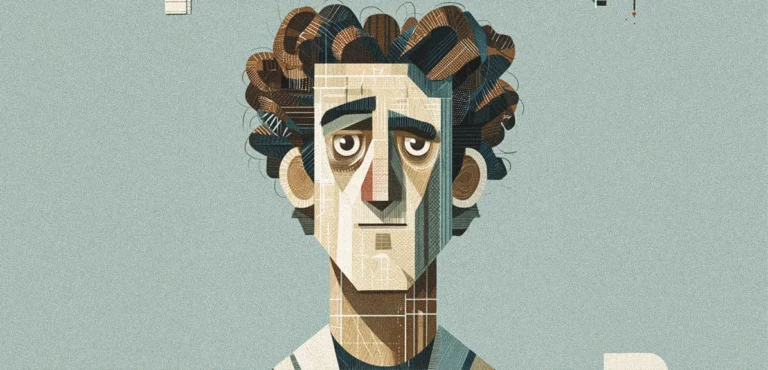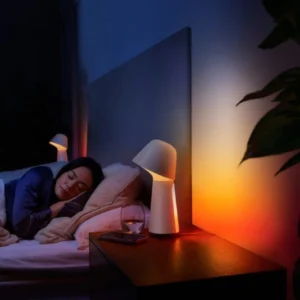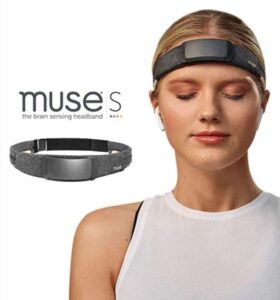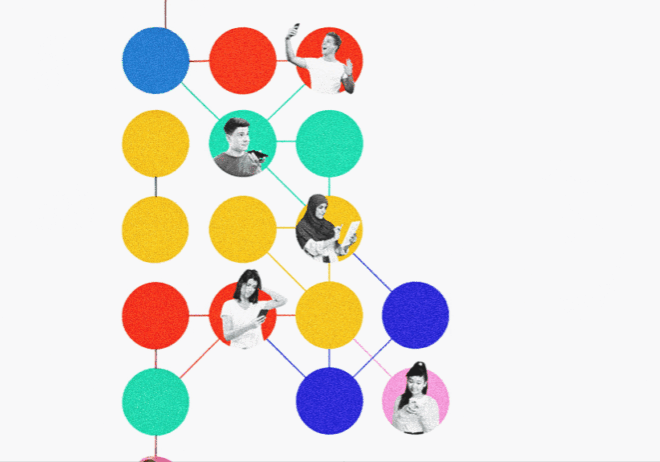
From Chaos to Calm: Why Calm Technology is the Future of Smart Design
You wake up to buzzing, then dinging. Followed by a “calm whisper” to hydrate, move, check your email, update your applications, and breathe—before you even brush your teeth. Sound familiar? We are in the midst of hyperactive technology—devices making noise that rob our attention the second we wake up.
This is not just our phones; it’s our watches, speakers, TVs, fridges, and even toothbrushes trying to get a word in. That’s why calm technology is gaining the momentum—a quieter, more international way to interact with the digital world.
But while most technology is growing noisier, a quiet revolution is taking hold. In steps calm technology, a design philosophy which is not trying to steal your attention. Calm technology is giving it back. It isn’t flashy or demanding. It doesn’t ping, prod, or otherwise distract you. Calm technology is working quietly away, in the background, enhancing your life without interrupting your daily life.
In a world in love with engagement, calm technology is asking a radical question: What if the best experience of technology is the one you hardly notice? Let us think about why this minimalist approach is gaining traction, and that the future of technology could be a lot quieter than you think.
Let’s cut through the noise and explore why calm technology is the quiet hero of modern design
Calm technology is a term that was introduced in the 1990s by Mark Weiser and John Seely Brown, researchers at Xerox PARC, to describe their ideal of technology that informs but never demands and that is there when you need it but invisible when you don’t.
It is essentially the opposite of attention-sucking technology. Calm technologies are technologies that are not in your face with their incessant notifications and ridiculous flashy interfaces but rather slowly nudges you along in the background unless it is absolutely inappropriate to do so.
To put it simply, Calm Tech is made to value your time. It seeks to subtly complement your world rather than take center stage.
Why now? Why calm tech is having a moment?
Fast forward to 2025, and we’re in a hyperconnected world—where notice-fatigue, zoom-fatigue, and an always-on standard have become part of the vernacular. Our devices determine the drumbeat of our days—from morning alarms to end-of-day reminders to check out.
When not busy perpetuating a stream of alerts/pings/demands for attention, our devices have become an interruption instead of a potential enhancer. So, while the mobile era of smart notifications was clearly designed to maximize engagement and opportunity, we are now delivering means of cognitive overload. We have arrived at a tipping point where people are no longer wowed by technology that can do everything; they want technology that knows when not to do anything. In a noisy/overwhelming world, silence has become a privilege—and calm technology is providing that intentional alternative to distress.
Here’s why calm tech is on the rise right now:
- Digital burnout is a real thing: the average person receives more than 100 notifications a day. We are over-stimulated and drained.
- Mental health is important: people are beginning to prioritize emotional well-being over being constantly connected.
- Minimalism is cool again: the “less is more” aesthetic is coming back into tech design.
- Wearables and ambient computing are maturing: hardware now knows how to operate quietly in the background and collect data passively, with less active engagement.
In conclusion, calm tech is not only an emerging design philosophy, but it’s becoming an emerging cultural imperative.
How calm technology works: Less flash, more function
So, what the heck is calm tech? It’s not just turning off push notifications (though that certainly doesn’t hurt). Calm tech is grounded in a few principles:
- It signals without being disruptive: A good example? The Nest Thermostat. It glows when you get close to it, indicating the temperature, and it will never ding, or buzz (unless something is really wrong).
- It is background, not foreground: Calm tech is always a background experience in that like ambient lighting, a user feels it and notices it only when they think about it.
- It empowers the user, not the device: Calm tech brings control back to the user. You can decide when to interact or when to engage; you have the control.
- It responds to context: Your watch shouldn’t be pushing you to breathe when you are 8 km into your run on the treadmill. Calm tech responds to the context of where it sits and changes its output accordingly.
Everyday examples of calm tech
You might already be using calm tech without realizing it. Here are a few stealthy heroes of the movement:
Philips Hue Lights: Change the color and brightness based on the time of day—helping regulate circadian rhythms with not a single ping.
Muse Headband: An EEG-feeding headband that gently provides audio cues to guide meditation. No distractions, no screens, just calm.
Apple’s Focus Mode: Rather than silent everything, it allows you to receive only essential notifications, chosen by you.
E-Ink Displays: From Kindle readers to minimalist phones, such as the Light Phone, e-ink can reduce eye strain and eliminate the temptation to doom-scroll.
The philosophy behind calm tech
Calm tech is more about rethinking the relationship with our electronics rather than simply making the technology quieter. Are we to ask the very basic question, “Should technology distract us or serve us? ” Calming technology challenges the idea that more interacting with the device is always better. Calm tech says that it is ok to prioritize mental health over screen time in an age that constantly promotes attention-driven models.
This shift is in line with broader cultural modes—increased focus on intentional living, mindfulness, and digital detoxing. In fact, calm tech is like the digital version of wellness culture—it is low-key, tasteful, and focused on making us feel better now rather than just doing more.
Calm technology at work: Benefits for businesses as well
Businesses are beginning to include the peaceful approach as well, so it’s not simply personal devices that are doing so.
“Do Not Disturb” mode in Slack? A soothing technological element.
What is the focus time scheduling for Microsoft Viva? Calm down, tech.
Businesses are recognizing that multitasking and continuous notifications are harming productivity rather than increasing it. Regaining focus after a distraction might take up to 23 minutes, according to studies. Regaining attention is aided by calm technology.
Soon, there will be more “quiet office tech” available, such as devices that facilitate hybrid workflows, improve deep work, and lessen notification clutter without taxing staff.
Calm designing: The next major UX revolution
Calm technology presents a new design philosophy to developers and designers, emphasizing subtlety over stimulus. The emphasis is now on building context-aware experiences, utilizing ambient cues like light or vibration, streamlining interfaces, and cutting down on steps to complete tasks rather than pursuing engagement. Even the way technology responds to mistakes grows more tactful, with the goal of assisting the user rather than annoying them.
This type of quiet intelligence is now more possible than ever before because of developments in AI and machine learning. Now that calm tech can anticipate demands, adjust to context, and operate in the background without requiring attention, it can improve the experience. It’s clever, yet not ostentatious.
Let’s talk about the future of Calm Tech
The next phase of calm technology (think mood-responsive smart homes, minimalist wearables) will be more about complementing one’s life, not dominating it. Cars that automatically downshift dashboard clutter at night. Healthcare devices that only notify you when something is actually serious. Even fashion—screen-free wearables that promote wellness but do not distract you from direct engagement and mindfulness—is starting to appear.
As we move from design-first engagements to human-first experiences, calm tech is not a fringe vision anymore; it is manifesting itself as the new norm. The best tech will ultimately be the tech you don’t notice—tech that is invisibly embedded in our everyday lives and supports more mindful and intentional living.
Cut to the chase
In a world full of nonstop signals, calm technology is the soft revolution we’ve all been waiting for. It takes care to respect your attention, it works in the background, and it gives you power back. So, the next time a notification derails your productivity, ask yourself, What would calm technology do? It would… likely not be much. And therein lies its value.




